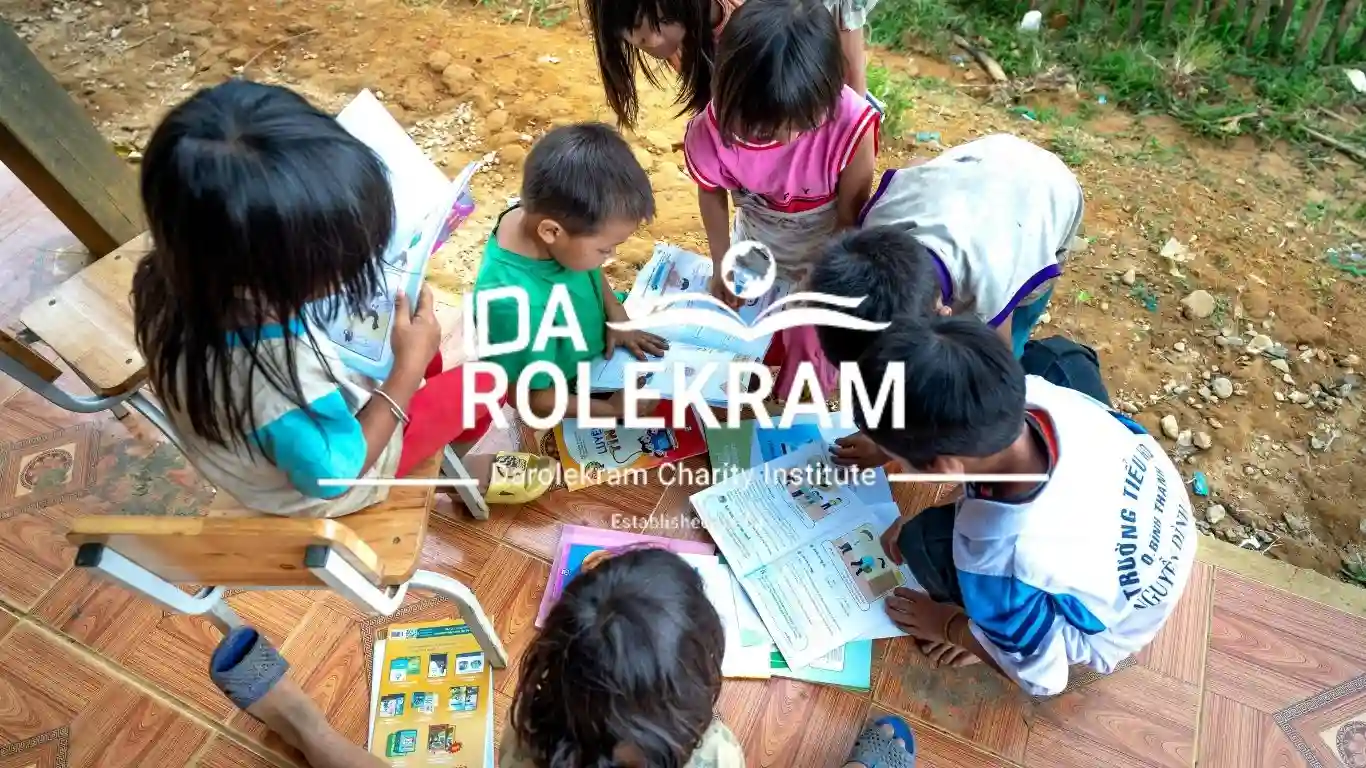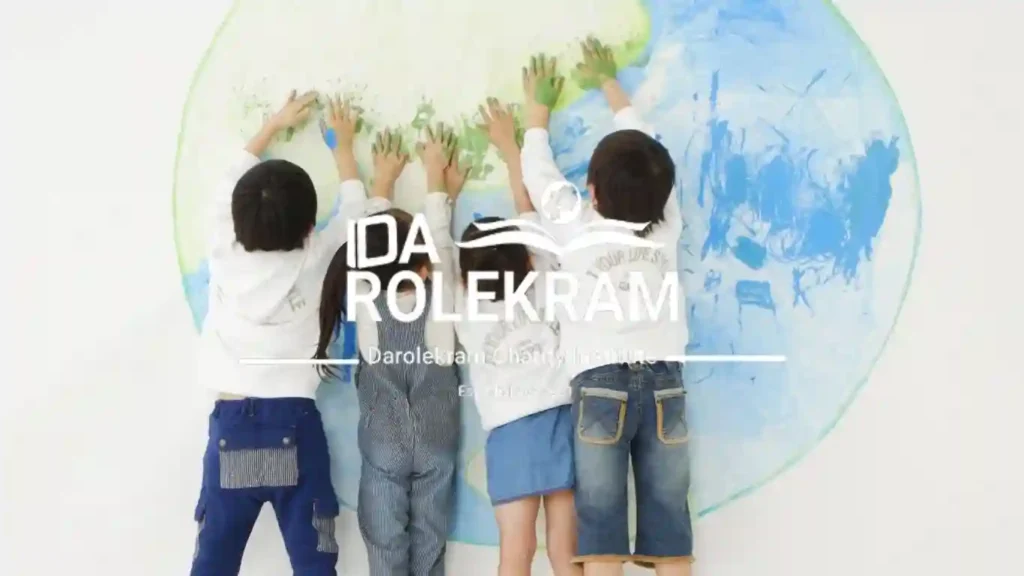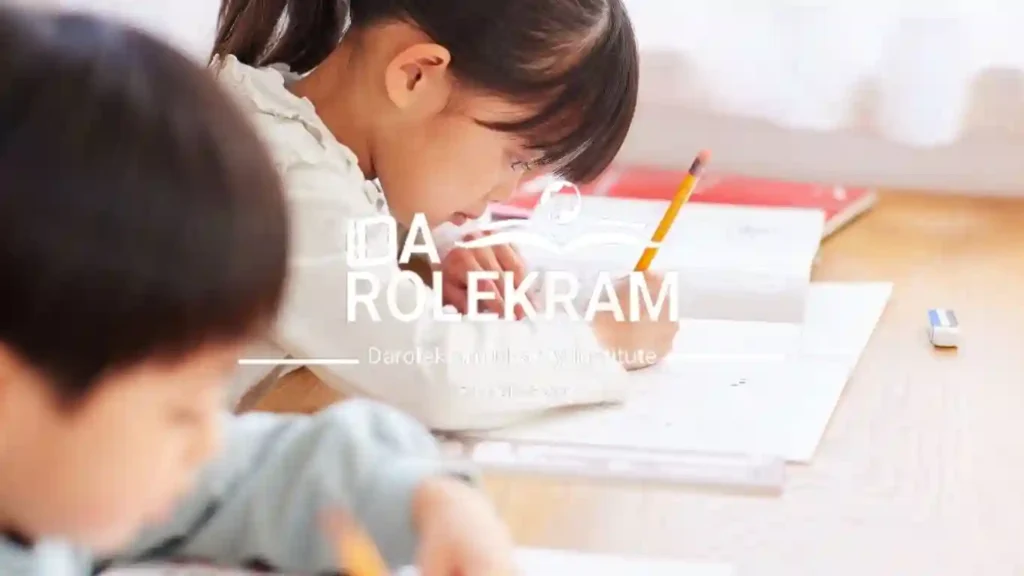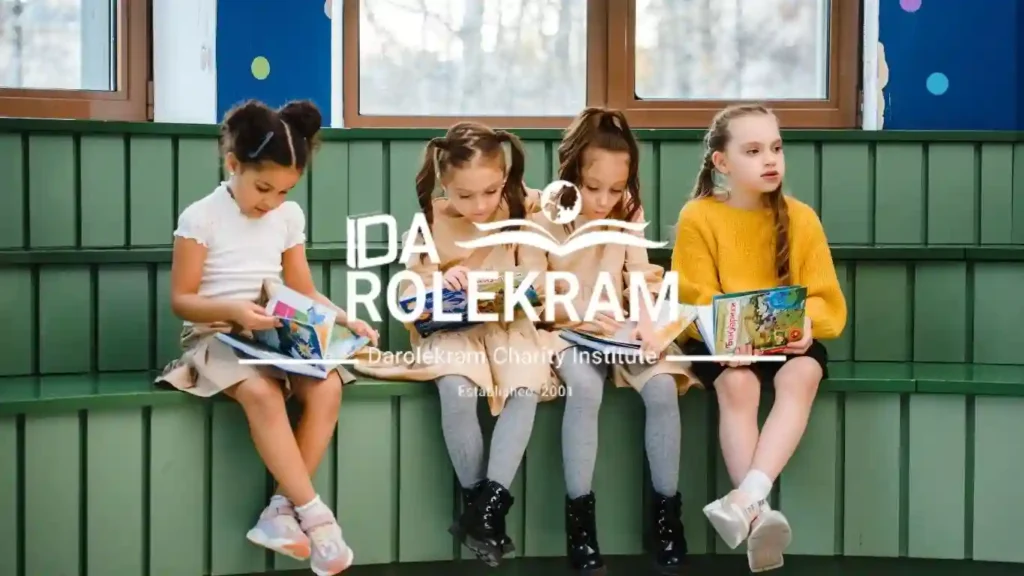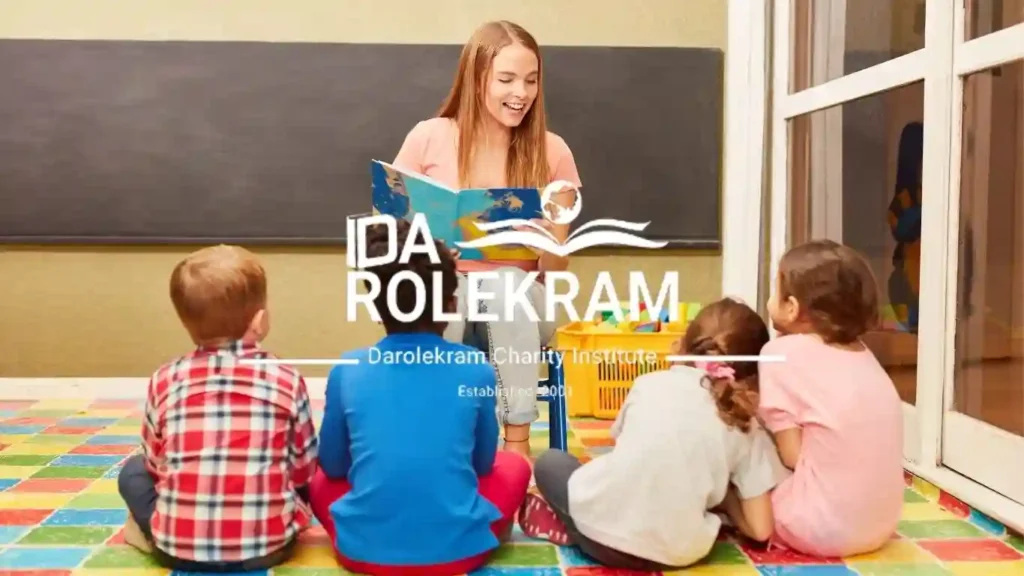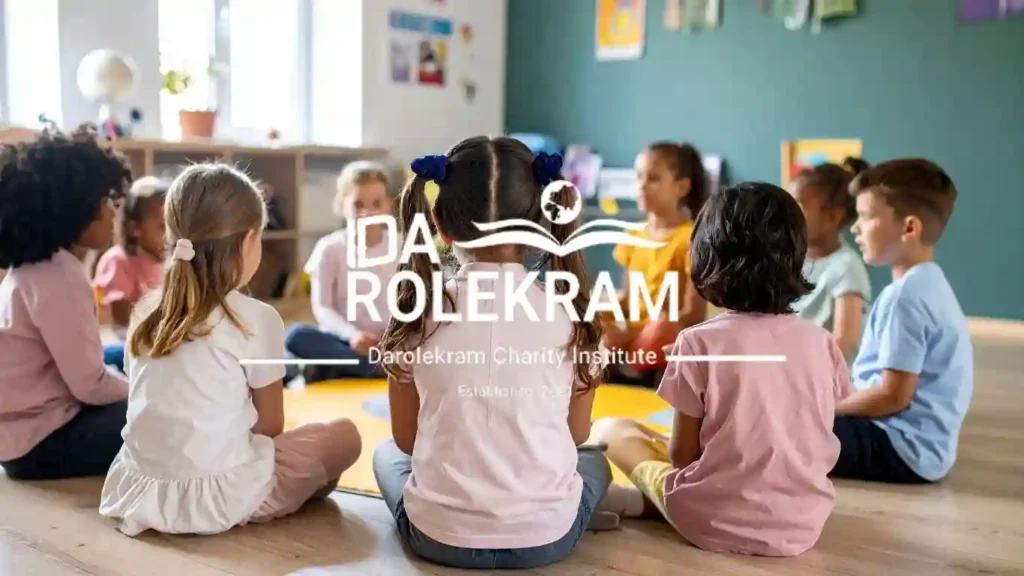Tehran, as Iran’s educational epicenter, faces complex challenges in ensuring equitable access to quality education for all children, particularly those from underprivileged backgrounds. This comprehensive analysis examines the current state of educational initiatives within Tehran’s metropolitan area, exploring innovative approaches to supporting vulnerable students and breaking cycles of educational poverty. We investigate the critical role of specialized institutions in addressing educational gaps, the impact of socioeconomic factors on academic achievement, and sustainable models for educational intervention that preserve human dignity while delivering measurable outcomes.
Tehran’s metropolitan educational environment presents significant opportunities alongside complex challenges that demand innovative and strategic solutions.. By reviewing effective case studies, policies, and institutional practice, this article offers insights into how Tehran’s educational system can better respond to the educational needs of children who are at risk of educational failure: public policy-public philanthropy-philanthropy-community engagement; and the emergence of holistic preventative approaches that include educational, psychological, social, and cultural development for children.
The role of well-known organizations in Tehran’s educational system is further examined in this analysis, with an emphasis on research-based strategies for student assistance that have shown enduring effects. We look at how Tehran-based institutions can make the most of the city’s resources while tackling the unique difficulties faced by underprivileged students in urban settings.
Why Supporting Children’s Education in Tehran Is Crucial?
Education is one of the most powerful tools for breaking the cycle of poverty, especially in big cities like Tehran. Thousands of children in the capital are unable to continue their studies due to financial hardships, family struggles, or lack of proper resources.
What challenges do underprivileged students face in Tehran?
Many students in Tehran face issues such as:
Inability to pay tuition fees or buy school supplies
Limited access to technology for online learning
Social and psychological challenges linked to poverty
These obstacles often result in children dropping out of school, which increases the risk of child labor and limits their opportunities in adulthood.
How can education change their future?
Access to education equips children with knowledge, skills, and confidence. When children stay in school, they gain better chances of securing stable jobs, breaking free from poverty, and contributing to society. Supporting education in Tehran is not just about individual success — it’s about building a stronger and more resilient future for Iran.
Best Ways to Help Iran Children Education in Tehran
Helping children in Tehran doesn’t always mean giving large sums of money. There are multiple ways, both financial and non-financial, to make a real difference.
Donating through trusted NGOs and local charities
The most effective way is to donate to reputable NGOs such as the Darolekram Foundation, which provides long-term scholarships, mentorship, and essential support for students in Tehran.
Providing books, laptops, and school supplies
Educational resources like books, stationery, and especially digital devices are vital in today’s learning environment. Donating these items directly supports children’s ability to stay in school.
Volunteering your time and expertise
Even if you can’t contribute financially, you can help through volunteering — teaching, mentoring, or offering professional advice. This personal involvement has a long-lasting impact on students’ lives.
Darolekram Foundation’s Role in Tehran
Among all NGOs, the Darolekram Foundation stands out as one of the most trusted and impactful organizations working in Tehran.
How Darolekram supports students in Tehran
Darolekram provides more than just financial aid. It offers:
Scholarships for underprivileged students
Mentorship programs for academic and emotional support
Coverage of living expenses to prevent school dropouts
Why Darolekram is a trusted NGO for education donations
With transparent financial reports, success stories, and long-term student tracking, Darolekram ensures every donation is used effectively. For donors — whether local or international — it is one of the most reliable channels to support education in Tehran.
Tehran’s Educational Landscape and Demographic Challenges
Tehran’s status as the largest metropolitan area in Iran brings many pros and cons for the delivery of educational services. The greater Tehran metropolitan area serves a diverse population across various socioeconomic backgrounds, representing diverse social, economic, and cultural backgrounds with varying educational needs , economic and cultural backgrounds, and educational needs. In addition to the large urban center, this diversity in demographics is central to educational planning approaches that will deal with different levels of academic readiness and preparedness, language differences and economic conditions of the students.
The educational facilities in the capital include thousands of schools and universities, and countless schools and other educational support facilities, but there are still notable gaps related to children from economically disadvantaged families and research concerning urban poverty. The expressions of poverty in the city of Tehran differ from those in rural poverty, such as families relocating from the provinces seeking economic opportunities but having to migrate due to high inflation and pressures of living in the capital and lacking networks to enter the economy and city. These settings create specific opportunities and challenges for children whose educational success is often dependent upon familial stability and household resources.
Tehran’s educational achievement data shows that there are still disparities in children’s accomplishments and educational attainments between districts and neighborhoods. On standardized assessments, children from affluent neighborhoods in Tehran consistently outperform their peers from lower-income areas.. This inequity extends far beyond a cognitive outcome; it also includes differences in access to extra learning materials, underachievement relating to learning and educational goals, and an overall lack of sustainable educational attainment. To understand these inequities, it is necessary to connect housing policy, economic development policy, and accessing educational resources within the structure of a metropolitan setting.
Urban Poverty and Educational Access
Urban settings such as Tehran are incredibly difficult to navigate in terms of educational poverty due to their landscape of co-existing needs and resources within a concentrated geographical area in which both of these factors bring both challenges and opportunities. Unlike rural areas where the educational challenges posed with poverty and social class can stem from isolation or lack of infrastructure, in urban areas, educational poverty tends to be created by access barriers associated with a combination of factors such as economic inequality, housing instability, and social fragmentation. A child from a low-income family in Tehran might be living in a neighborhood that is only a short walk away from an exceptional school, but may still face phenomenal access barriers to quality education due to their lack of financial ability to pay even the smallest cost to contribute to their education, a child that does not have the means to learn in their first language, or access to networks of social capital related to educational investment in their future.
Educational segregation among families in urban centers like Tehran evidences broader patterns of urban development and socio-economic stratification Families with economic means concentrate in neighborhoods offering superior educational opportunities, while lower-income families find themselves in areas with fewer resources .. Private citizens who have some level of economic means, purposefully position themselves in neighborhoods that provide better educational opportunities, while at the same time, lower prospective students and families to areas with fewer educational opportunities. At some level, the geography of advantage and the geography of disadvantage are connected and it’s impossible to ameliorate disadvantages with individual action alone, so educational institutions must intervene and develop available options that align with policies that can address a broader range of support for students and families.
A recent study by the municipal education department in Tehran shows that children facing low-income challenges experience multiple simultaneous challenges affecting their education. Inadequate caloric intake and its impact on child cognition, unpredictable housing situations affecting school attendance, and exposure to family stressors that change emotional well-being and school focus, supports the need for educational interventions to consider the overlapping nature of these challenges to education rather than a purely academic focus.
Infrastructure and Resource Distribution
Over the course of years of development, Iran’s educational infrastructure in its capital city has expanded, yet the provision of resources across the city remains unbalanced. Schools in higher-income areas often maintain better infrastructure, technology resources, and support programs funded through donations from parents and private partnerships. Meanwhile, the schools serving poorer communities often struggle with a lack of resources, overcrowded classrooms, and insufficient support staff to meet the complexities inherent in the entirety of their student population.
The challenge of equitable resource distribution in Tehran is not limited to physical infrastructure alone. Human resources, teaching and learning materials, and support services also fall under the category of resources. Experienced and knowledgeable teachers usually prefer to work in schools with working conditions and resources that are more desirable, which develop talent gaps in their employment in schools that serve the most marginalised student body. This pattern perpetuates educational inequality by concentrating the most skilled educators in schools serving students who already possess social and economic advantages.
Several innovative resource-sharing initiatives have emerged within Tehran’s educational system . These creative and innovative acts include partnerships between schools across districts, the use of released staff for common professional development activities between schools (schools share releasing time resource) and collaborative use of certain facilities (for example, schools share a gym). These creative and innovative acts illustrate that we can address educational inequality in Tehran through creative organizational parterships that rely on creative resource sharing to distribute existing resources better, instead of solely relying on increasing the total resources allocated to education.
1. Institutional Responses to Educational Inequality
Tehran’s education issues have initiated a spectrum of institutional responses, including public programs and private charitable work. The best approaches recognize that a lot of overlapping factors feed into educational inequality requiring comprehensive interventions that address the academic, social, emotional, and economic dimensions of students’ well-being. Successful programs break down barriers to educational participation and fully address academic needs with mental health resources, family and community engagement, and practical supports.
For educational organizations in Tehran, the programs developed are based both on their understanding of the implications of poverty on academic success. The most effective educational institutions understand that while financial aid is important, it alone cannot address the complex challenges facing underprivileged students are aware that funding is important, but not almost everything, when it comes to the complex needs of underprivileged students. In fact, global strategies that maintain dignity in how educational organizations provide the help that is needed, while finding the best routes for success for their students, initiated the best use of resources and had the long-term best outcomes.
The Darolekram Foundation represents this systemic approach within the educational ecosystem of Tehran. The Foundation has several branches across metropolitan Tehran to support students at risk of educational failure. The support provided by the Foundation demonstrates how institutions can offer a thorough system of support that considers the interrelated facets of educational disadvantage while ensuring transparency and accountability to donors and the communities where they operate.
Comprehensive Student Support Models
Successful educational intervention programs in Tehran have evolved from subsidization models to holistic support systems that consider the totality of factors mitigating student success. Ideal academic performance requires more than just classroom instruction; it will also be dependent upon psychological wellness, family safety and stability, peer relationships, and visions for the future and wants and wishes of students. Holistic models can, ideally, support academic tutoring, counseling services, extracurricular opportunities, family components, and career counseling designed to facilitate students envisioning and working toward a future that will work for them.
The establishment of holistic student support models requires the utmost attention to providing dignity in the form of receptiveness to both student support and an emphasis on student respectfulness. Successful programs integrate support services into the free educational opportunities that also benefit all the participants in school-wide programs. The overall goal is for students to value the support received; they feel good about receiving assistance and support rather than degraded as recipients of assistance. This helps preserve students esteem and motivation and provides resources necessary for students to be successful in academic achievements.
The implementation of holistic support models in Tehran has highlighted value in culturally sensitive approaches and honoring family values and community norms while providing new possibilities and perspectives. Programs that are able to connect and work with families that have different backgrounds usually work in developing trust, bring clear communication around the program goals and methods, and are flexible in service delivery to meet the diverse needs and preferences of different communities in which they deliver services to meet the needs and delights of different communities in the metropolitan area.
Measuring Impact and Ensuring Accountability
To be effective in addressing the educational inequalities that student populations face, institutions and organizations must have systems in place to effectively measure impact, and be accountable to students, their families and supporters. Educational programs in Tehran have been able to develop management systems which measure immediate outcomes like academic performance, and later, indicators like attainment in educational systems, career attainment and citizenship through engagement. These measurement systems, not only allow for the organization to assess the makeup of programs designed for improvement, but they also assert impact and do these when demonstrating impact to stakeholders and potential supporters interest in stakeholders and possible supporters.
An effective measurement of impact includes a variety of indicators, looking at all student development resulting from educational programs. For example, not only evaluating academic success, many programs evaluate additional indicators of change additional questions to evaluate change, like did the program improve student’s confidence, social skill development, leadership skills, and willingness to aspire beyond academic success; a more enriched evaluation would provide greater clarity on program effectiveness. This also allows organizations better clarity on whether more needs to be done for supports and if so, support that is added value.
Accountability systems in the context of successful educational programs at associated Universities in Tehran tend to regularly report back to donors and community stakeholders, obtain evaluations from external researchers, and need ongoing feedback on programming from student participants and their families. Accountability systems build trust with its supporters and maintain its relevance to the kids, ensuring programs continue to operate for the people who support, and who continue to make a difference.
2. Innovation in Educational Delivery and Support Services
To increase access and improve outcomes for disadvantaged students, Tehran’s education sector has implemented innovative service delivery methods using technology, community connections, and new forms of programming. Often, recognizing that traditional educational services and supports, while effective, do not adequately respond to the needs or situations of students from challenging backgrounds and challenging contexts, is the impetus for these innovations. Successful innovations often take recognized pedagogical strategies and combine them with new ways of service delivery to enhance access, promote engagement and effectiveness.
Expanding educational opportunities in Tehran has become more and more dependent on technology integration, especially in light of the global trend toward digital learning platforms. Digital equity concerns must be carefully considered for technology integration to be successful, though, in order to guarantee that students from all backgrounds have access to the devices they need, internet connectivity, and technical assistance. In order to create comprehensive learning environments, programs that effectively use technology for educational equity usually combine digital resources with in-person programming and human support.
In Tehran, community-based approaches to educational support have become more popular as organizations realize how crucial peer networks, cultural ties, and local knowledge are to fostering student success. These strategies frequently entail collaborations between official educational institutions and neighborhood associations, religious institutions, and community organizations that can offer students and families mentorship and support that is appropriate for their culture.
Technology-Enhanced Learning Environments
The use of technology in educational support programs in Tehran has opened up new ways for students to learn on their own, access educational resources from a distance, and get involved in new ways. But to successfully integrate technology, you need to pay close attention to the digital divide that can keep students from lower-income families from getting the devices or reliable internet access they need. Effective programs address these challenges through device lending programs, public internet access points, and training for students and families in digital literacy skills.
Technology-enhanced learning environments in Tehran have been especially helpful for students from low-income backgrounds who might not otherwise have access to specialized educational content, expert instruction, and opportunities to learn from their peers. Online platforms can help students find tutors, mentors, and educational resources no matter where they live in the metropolitan area. This can help get around some of the problems that urban geography and transportation can cause when it comes to getting to school.
The best ways to combine technology with education in Tehran are to use digital tools and get help from people and build relationships. Technology can help students find information and learn new things, but they still need the support, guidance, and personal connection of skilled teachers and mentors to stay motivated and do well in school. Good programs use technology to improve, not replace, the relationships between people in the learning process.
Community Partnership Models
Collaborative approaches involving multiple organizations and community stakeholders have proven particularly effective in addressing complex educational challenges in Tehran. These partnerships leverage the unique strengths and resources of different organizations while avoiding duplication of services and maximizing impact for students and families. Successful partnership models typically involve clear agreements about roles and responsibilities, shared measurement systems, and regular communication to ensure coordination and effectiveness.
Community partnerships in Tehran’s educational sector often involve collaborations between schools, nonprofit organizations, religious institutions, businesses, and government agencies. Each partner contributes different resources and expertise, creating comprehensive support systems that no single organization could provide independently. These partnerships also help ensure that educational programs remain connected to community needs and values while accessing diverse sources of funding and support.
Developing effective community partnerships requires significant investment in relationship building, trust development, and shared planning processes that ensure genuine collaboration.. You need to invest in building relationships, earning trust, and setting up ways to actually work together, not just on paper. Organizations have to be willing to give up a little control if they want the benefits of collaboration. It’s not always comfortable, but it’s necessary. Plus, you’ve got to be proactive about handling challenges as they come up, and make sure your partnership agreements have some flexibility for when things inevitably change.
3. The Darolekram Foundation: Excellence in Educational Support
The Darolekram Foundation stands out as a leading example of effective educational support within Tehran’s challenging environment. With a strong network of branches across the city and surrounding regions, the Foundation has earned its reputation by providing comprehensive, dignified assistance to students who need it most.
Their approach goes far beyond simple financial aid. Darolekram implements a holistic support model—addressing not just academic performance, but also students’ psychological, social, and cultural needs. This well-rounded strategy has become a benchmark in the sector, and it’s no surprise that other organizations look to their model when designing their own programs.
After more than twenty years of operation, the numbers speak for themselves: over eleven thousand students supported, with eight thousand currently benefiting from their services. The Foundation’s focus on measurable outcomes and human dignity has proven that sustainable impact is possible, even in the face of complex challenges. Their work has set a standard for institutional intervention in educational equity across Tehran and beyond.
For organizations and stakeholders seeking to invest in proven, high-impact educational initiatives, partnering with the Darolekram Foundation offers a strategic opportunity. Their track record of success and commitment to best practices make them a valuable ally for anyone serious about creating meaningful, lasting change in the lives of disadvantaged children.
4. Policy Implications and Systemic Reform
Tehran’s track record with educational support programs isn’t just a case study—it’s a wake-up call for policymakers and administrators. If you’re looking for real solutions on educational inequality, you can’t rely on half-measures or short-term fixes. What’s working in Tehran shows that you need sustained investment, strategic policy frameworks, and a willingness to support holistic student development—not just patchwork solutions.
Addressing educational equity requires a two-pronged approach: tackle immediate gaps, sure, but also confront the systemic barriers that keep the playing field uneven. That means rethinking how schools are funded, how teachers are trained and retained, and how support services are rolled out to families. Community development initiatives can’t be an afterthought—they’re a smart investment in long-term educational outcomes. And let’s not forget: effective policy comes from ongoing, two-way dialogue with everyone involved—educators, researchers, policymakers, and the communities they serve. Decisions made in a vacuum rarely hit the mark.
Organizations in Tehran’s educational sector are highlighting a key takeaway: policy environments that reward innovation and collaboration deliver better results. When policies enable partnerships, offer flexibility in program design, and support comprehensive approaches, you maximize the impact of both public and private sector investments. Bottom line? For real progress on educational equity, policy has to move beyond rhetoric and actively support the people and programs driving change.
Funding Models and Sustainability
Sustainable funding for educational support programs in Tehran requires diverse revenue streams that combine public resources, private philanthropy, and innovative financing mechanisms.
Funding models in Tehran don’t exist in a bubble. The economy shifts, government policies change, and philanthropic trends come and go. The organizations that succeed are the ones that can pivot quickly, adapt their strategies, and still deliver quality services to students who need them most. This requires strategic leadership and clear mission focus, a sharp focus on your mission, and a commitment to tracking results and showing supporters the real impact of their investment.
Innovation is key, too. More and more, businesses, foundations, and international organizations are teaming up with local programs—not just writing checks, but also sharing expertise and resources. These partnerships are built on a shared vision and a willingness to collaborate on program design and evaluation. When everyone’s invested in the outcome, you get stronger, more resilient support for students. In short: staying flexible, fostering partnerships, and keeping an eye on results is what keeps these programs thriving.
Scalability and Replication
Scaling successful educational support models requires careful attention to maintaining program quality while expanding capacity and adapting approaches to different contexts . To actually pull this off in a business-savvy way, Successful scaling requires maintaining program quality while adapting to diverse contexts between expanding reach and keeping the quality bar high. What works in Tehran could easily tank elsewhere if you don’t tailor your approach for new environments—think demographic shifts, economic realities, or cultural nuances.
The key is to pinpoint which core elements drive results, then partner up with local organizations that know their communities inside and out. Without that local insight, it’s easy to miss the mark and end up with a program that simply doesn’t connect.
On the operational side, a lot of effort has gone into codifying the Tehran models—detailed documentation, robust onboarding for new staff and partners, and technical support systems to help newcomers get up to speed. This sort of infrastructure is essential for any business aiming to scale successfully: you want every new branch or location to uphold the same standards, but with enough flexibility to adapt to local needs. The objective is achieving growth that is both sustainable and effective for growth that’s both sustainable and effective, not just a bigger footprint.
Conclusion
Tehran’s educational sector faces a complicated mix of challenges and opportunities, especially when it comes to supporting underprivileged children and families. There’s no shortage of resources or talented professionals in the city, but the real value lies in leveraging these assets to drive meaningful, scalable change. Tehran is in a prime position to pilot innovative solutions that could eventually serve as benchmarks for other metropolitan areas grappling with similar issues. Still, progress is only possible if stakeholders across the board—government agencies, educational institutions, nonprofits, private sector partners, and the wider community—are fully engaged and aligned.
It’s clear that narrow, academic-only interventions just don’t deliver sustainable results. The most successful models in Tehran address not just classroom learning, but also students’ psychological health, family dynamics, social skills, and long-term planning. Holistic strategies like these have proven far more effective in generating lasting, positive outcomes for both individuals and communities.
Organizations such as the Darolekram Foundation set a strong example in this regard. Their approach—anchored in transparency, respect, and comprehensive support—demonstrates that institutional commitment to student wellbeing and dignity translates directly into better educational outcomes and healthier communities. Their work provides a valuable playbook for others aiming to tackle educational inequality through data-driven, culturally informed programming.
Looking ahead, Tehran’s progress toward educational equity depends on sustained, cross-sector collaboration. This includes ongoing investment in program development, continuous evaluation, and a willingness to adapt based on real results. Policy advocacy also plays a key role—systemic change is needed to address the underlying causes of educational gaps. By staying focused on these priorities, Tehran can continue to evolve as a leader in urban educational reform.
The implications reach far beyond city limits. The strategies and lessons emerging from Tehran have relevance for urban centers worldwide, particularly as cities become both engines of opportunity and areas of deep inequality. The takeaway: with committed leadership, strategic investment, and smart program design, cities can transform into engines of educational excellence, giving all children the chance to realize their potential and contribute meaningfully to society. This represents both a moral imperative and a strategic investment in sustainable social development.
FAQ
Frequently Asked Questions
Q: What is the best way to help children’s education in Tehran?
The most effective way is to donate to reputable NGOs such as Darolekram Foundation, which directly supports students with scholarships and mentorship.
Q: For students in Tehran applying for educational support what costs do educational support programs cover?
A: Many comprehensive programs like the Darolekram Foundation cover the cost of tuition fees, textbooks, school supplies, transportation costs, and possibly additional supports like tutoring, counseling services, and extra-curricular activities. Most programs will also last multiple years if students need to extend help and some aspects will depend on organizational coverage and individual needs assessment.
Q: Do educational assistance programs have age limits or grade requirements?
A: Most educational assistance programs do support students from kindergarten to university. Darolekram works directly with students who are at-risk of being suspended or dropping out of school, at all ages and academic levels. While some organizations might have set age ranges for children, many comprehensive educational support programs offer continued support for each child in its care, all the way through their academic careers.
Q: Can students be supported by several educational charities at the same time?
A: Each organization has their own policy. Some organizations will allow students to be supported by several programs while others may require exclusive support. Students should disclose all of the support they have received when applying for other educational support programs. Check the policies of each organization. Darolekram’s holistic approach will correspondingly limit the requirement for multiple program support.

